Lorem ipsum dolor sit amet, consectetur adipiscing elit. Ut elit tellus, luctus nec ullamcorper mattis, pulvinar dapibus leo.
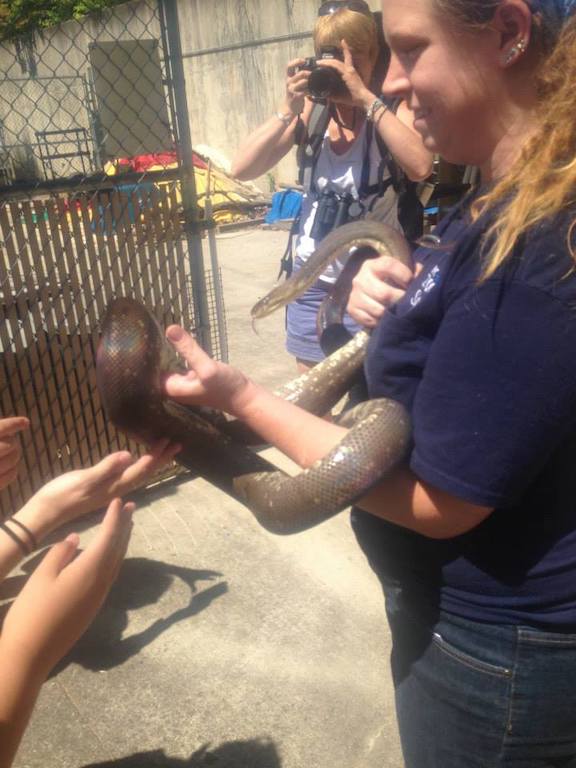

Stephanie Manka, Ph.D. is a wildlife biologist with 20 years of experience in mammal ecology and conservation, education, and outreach. Read her story to find out how she went from the daughter of a jeweler to a Ph.D. in wildlife biology.
Everyone is watching Tiger King! This docuseries on Netflix explores the true crime story between between a tiger breeder and his big cat sanctuary owner rival. As I’m a wildlife biologist, people are asking me lots of questions. The zoos featured in the series are awful (check out my review of Joe Exotic’s Zoo and Myrtle Beach Safari), but some people want to know if they are really that bad compared to other zoos. How can you tell ethical zoos from these terrible ones?
Before we get into the specific zoos mentioned in the show (there will be a blog post on them and sanctuaries too), we need to go over the basics of zoos in general. There are good zoos and bad zoos and it is SO CONFUSING to tell the difference. There is a lot of grey in between. In this post, I’ll help you tell ethical zoos from the bad ones.
The word zoo describes a collection of living animals. There are different types of zoos with different structures of ownership, ethics, and educational value and therefore wildly different practices when it comes to animal husbandry.
Zoos were originally created purely for entertainment. That has DEFINITELY changed over the decades, but originally people just wanted to look at cool animals up close.
We still go to zoos today for entertainment. It’s extremely fun and entertaining to see beautiful animals most people will never get to see in the wild. Once I watched meerkats for a research project and they made me laugh and smile so much. When I worked at Disney’s Animal Kingdom, I loved watching the okapi. Okapis are an elusive and endangered species that live in the Democratic Republic of Congo. Even as a wildlife biologist, I am unlikely to ever see them in the wild.
Zoos are important places for people to learn about animals. You can read about animals in books or see them on TV, but nothing is like seeing them for yourself. Seeing animals inspires people to want to know more about where that animal lives, what it does, and what it eats. After going to the zoo, children may go home and read about the animals that they see.
Ethical zoos will have a lot of educational information posted about the animals that you are looking at. Zoos also provide a lot of educational information about animals through their websites.
Zoos are important today because we are in a conservation crisis. We are currently in the sixth mass extinction of biodiversity on Earth. Humans directly caused species extinctions and declines through the destruction of habitat, poaching, overhunting, climate change and pollution. Many zoos are trying to save wild species through conservation efforts.
There are four major ways zoos play a role in conservation:
Zoos provide people with the rare opportunity to see animals up close. Experiences with nature, especially during childhood, are key for conservation. When people learn about and have real and personal connections with nature, they are more likely to have pro-conservation attitudes and behaviors.
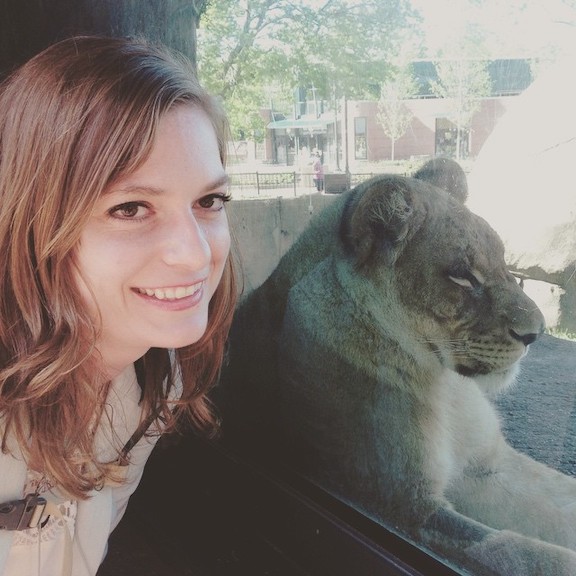
Zoos provide people with the rare opportunity to see animals up close. Experiences with nature, especially during childhood, are key for conservation. When people learn about and have real and personal connections with nature, they are more likely to have pro-conservation attitudes and behaviors.
With increasing urbanization and people spending more and more time indoors, these experiences with nature decline with every generation. This is called the “Extinction of Experience.”
Zoos offer people an opportunity for people to reconnect with nature. Connections with nature are especially important in urban areas where green spaces can be harder to find. The environments at zoos may be artificial, but most of the plants and animals are real.
With increasing urbanization and people spending more and more time indoors, these experiences with nature decline with every generation. This is called the “Extinction of Experience.”
Zoos offer people an opportunity for people to reconnect with nature. Connections with nature are especially important in urban areas where green spaces can be harder to find. The environments at zoos may be artificial, but most of the plants and animals are real.
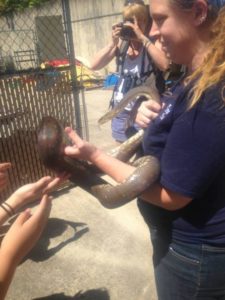
Zoos are an opportunity for people to get close to animals. Even an ethical zoo will let you touch some. This is a Macklots’ python ambassador animal that we were allowed to gently touch at the North Carolina Zoo.
Many of our actions directly affect wildlife that are even thousands of miles away! A the Cheyenne Mountain Zoo, keepers talk about how palm oil destroys the habitats of endangered orangutans.
Hopefully, by seeing animals, people will be motivated to either (1) change their own behavior to alleviate the problem that is impacting animals in the wild or (2) donate money to conservation programs that help protect the species in the wild.

When you are able to touch animals at ethical zoos, it is heavily monitored. In this case, we were only allowed to use two fingers to touch this Macklot’s python and were instructed to do it gently.
A lot of factors outside of our direct control, such as habitat loss and poaching, threaten many species. African forest elephants, the species I studied for my Ph.D., are poached so badly for ivory right now that it could very well lead to their extinction. Donations to organizations like the Wildlife Conservation Society (which is affiliated with the Bronx Zoo) pay for rangers’ salaries to patrol parks and reduce the poaching.
However, it is hard to change people’s behaviors. Purchasing products or gifts at an ethical zoo supports conservation efforts, but it is unlikely that many zoo guests will be inspired enough to contribute regularly to conservation programs. One promising study found an increase in visiter’s understanding of biodiversity and actions to help protect biodiversity across 26 zoos and aquariums from 19 countries.
Scientists and animal professionals agree that taking animals from the wild is no longer acceptable for captivity. Taking animals from the wild is considered unethical and a threat to conservation. The rare exception is when a species’ population is so small that the animals need to be put into captivity to breed for a reintroduction program.
Zoos therefore need captive breeding to persist. Ethical zoos document and regulate these breedings through studbooks. Professionals choose specific animals to mate with one another based on their history and genetics. Ethical zoos often transport animals to other zoos for mating purposes to increase the genetic diversity of the captive species.
IMPORTANT: Just because a zoo breeds endangered species does not mean they are contributing to conservation. If there are plenty of individuals of that species in captivity (like tigers and lions), breeding more of them in captivity does absolutely NOTHING to help them in the wild. There are more captive tigers in Texas alone than in the wild.
Some animals reproduce so well in captivity that they are given contraceptives. Professionals make these decisions based on the species’ captive population size, not the wild population size. For example, cotton-top tamarins are a critically endangered species. However, when I worked at Disney’s Animal Kingdom, we administered contraceptives to the cotton-tops because there was a healthy captive population size. Each anticipated animal needs a place to live once it is born.
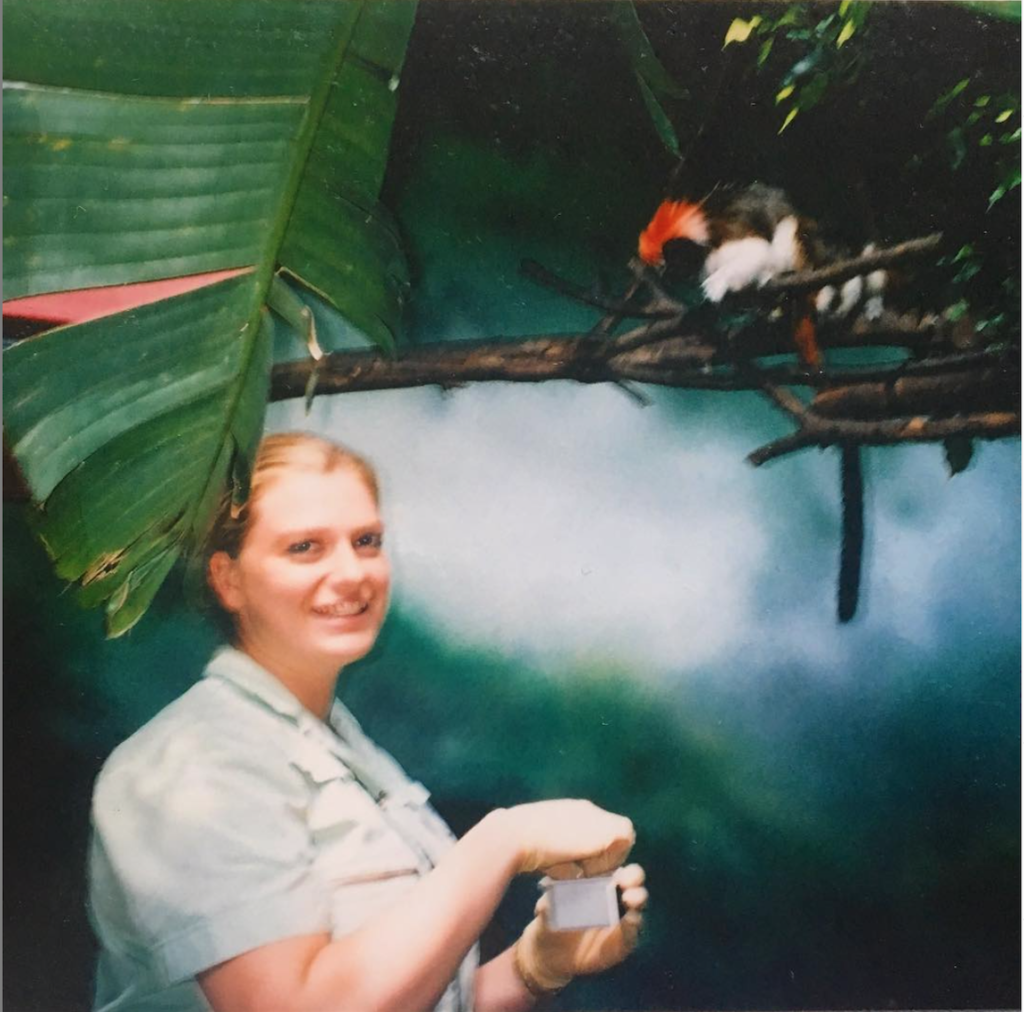
The overpopulation of some captive species is a problem for all zoos, even ethical ones. Zoos need a lot of money and space to support a large collection of animals. If an unexpected pregnancy happens or an animal does not have the right genetics, zoos will sometimes euthanize the animal. In 2014, people were outraged at the Copenhagen Zoo for euthanizing a healthy giraffe that was not genetically diverse enough to help reduce inbreeding in the captive population.
In addition to captive breeding, zoos play a role in species conservation through reintroduction programs. Captive bred exotic animals are unlikely to survive in the wild without many considerations in their husbandry. Zoos work with scientists and vets to develop programs to increase the odds that animals bred for reintroductions to the wild will actually survive.
Scientists design reintroduction programs so captive-bred will know how to eat, mate, and survive in the wild. Many endangered species are threatened by poaching and therefore scientists want to keep animals fearful of humans. Therefore, keepers do not handle animals directly or use disguises so the animals do not see them as human. Even with such precautions in place, the survival rates can be low.
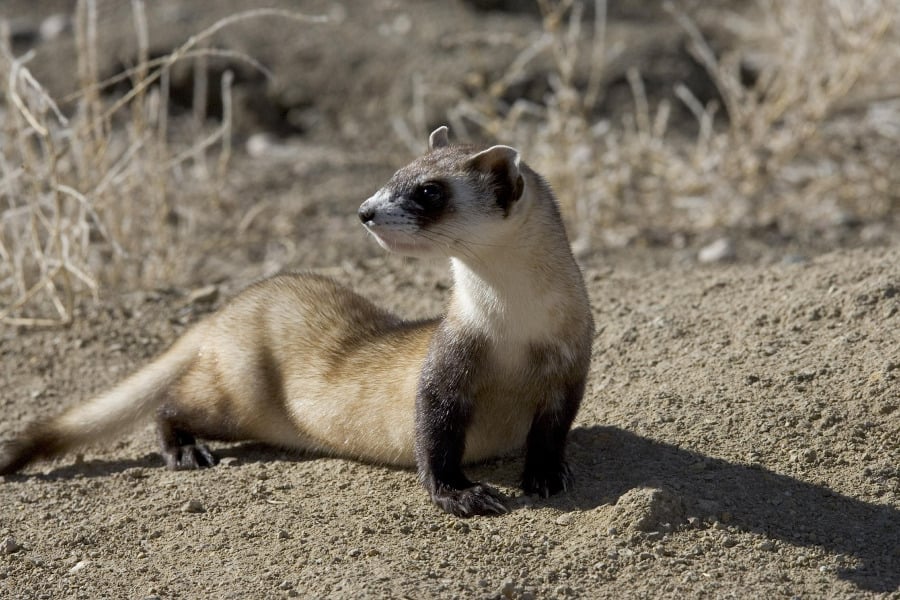
Often the public does not see the animals involved in captive breeding for species reintroduction programs. Frequently, these are smaller animals like frogs, salamanders, and even insects.
Many zoos have their own conservation programs on threatened and endangered species in the wild. They fund the direct research of threatened and endangered species. Ethical zoos also provide resources to protect threatened and endangered species such as anti-poaching rangers. Perhaps the zoo that contributes the most to conservation field programs is the Bronx Zoo run by the Wildlife Conservation Society.
Some zoos (like the Oklahoma City Zoo) even award grants to individuals or organizations to conduct research and conservation on species in the wild.
To determine if a zoo is ethical, it’s really important to look at how many people own/run the zoo. Zoos owned by organizations have a board of directors and multiple parties responsible for making decisions about the welfare of animals.
Zoos can be run by:
Government zoos also have a nonprofit side, called “Friends of the (zoo name)” that allow for fundraising. Nonprofit zoos can also receive government funding.
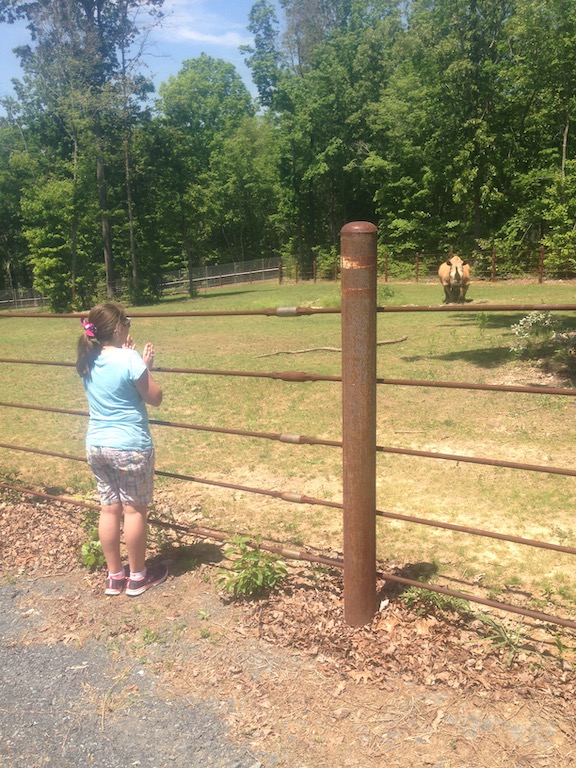
Government and nonprofit zoos are thereby run by groups of people which includes a board of members or tiered directorship. Many of these types of zoos have accreditation from the Association of Zoos and Aquariums (AZA, defined in the next part).
Government and nonprofit zoos use public money and are therefore transparent about their finances (example here).
Individuals almost always own private zoos. They do not need to consult a board of directors or veterinarians. Privately-owned zoos do not have to have any financial transparency.
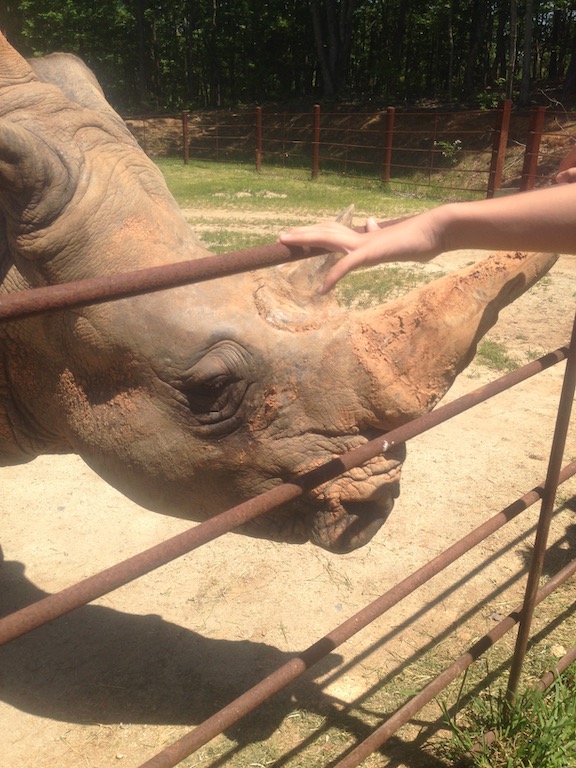
For a very long time, zoos and the public did not care about animal welfare. We didn’t know as much as we know about animals and their requirements. Zoos designed enclosures with only the zoo guests in mind and housed animals barren in cement cages. Animals in cages frequently show signs of stress and boredom through stereotypic behavior like pacing and head bobbing.
Over the years, scientific knowledge about animals increased in addition to public demands for better exhibits. Zoos improved their enclosures by making them look more like the species natural habitats. As a result, many animals reduced their stereotypic behaviors (although not completely – this is still a problem even at ethical zoos).
The Association of Zoos and Aquariums (AZA) is an independent non-profit that awards accreditation to zoos that meet the highest standards in animal care and welfare. To receive accreditation, zoos must meet guidelines in regard to animals’ enclosures, social behavior, health, and nutrition. The AZA guidelines are set by animal care experts, scientists, and veterinarians with decades of experience and are constantly evolving.
Scientists and animal experts constantly debate the minimum requirements for animals in captivity. Elephants are an especially controversial topic. Due to their large space requirements, high intelligence, and sophisticated social structure some professionals think that elephants should not be in captivity at all. Few zoos are able to meet elephants’ needs.
Most privately-owned zoos are called “roadside zoos” because they are often advertised on the highway with billboards to encourage people to pull over and visit. Roadside zoos are largely considered unethical and do not have AZA accreditation.
Ethical zoos are those that prioritize animal welfare, education, and conservation efforts above profits. They are run by non-profits or the government (at least in the United States, this might not apply to other countries) and have AZA accreditation. According to the AZA website, “less than 10 percent of the 2,800 wildlife exhibitors licensed by the United States Department of Agriculture under the Animal Welfare Act meet the more comprehensive standards of AZA accreditation.”
At ethical zoos, exhibit specialists design animal enclosures to encourage animals to behave as they would in the wild. Keepers frequently provide their animals with enrichment activities like treats or scents to encourage these behavior. For example, zoo keeper will fill a ball with holes in it with food. Getting all of the yummy food out of the ball becomes a fun activity for the animal.
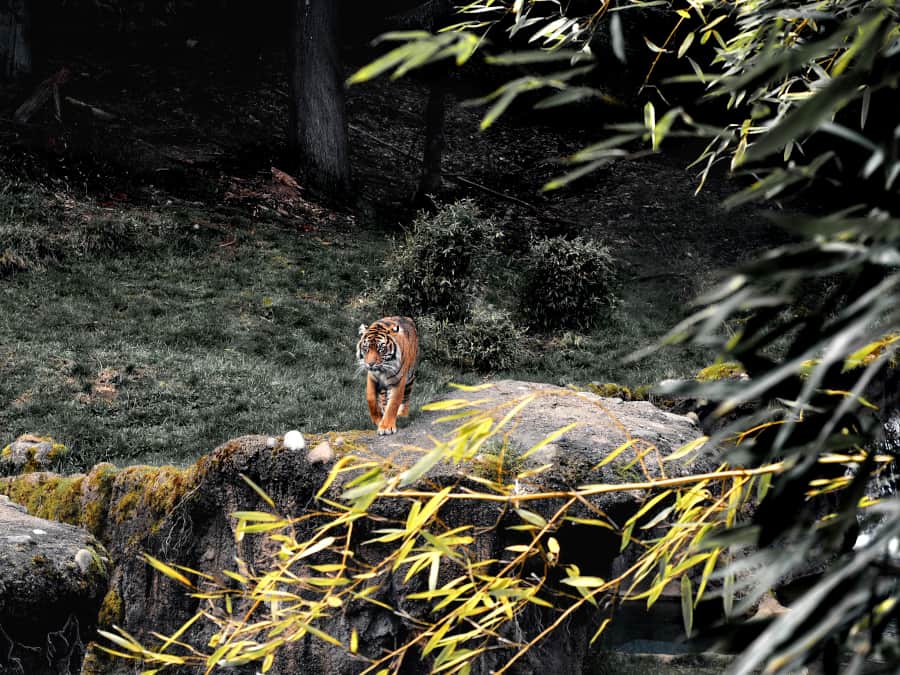
Ethical zoos hire professionals including skilled animal keepers, scientists, and veterinarians. They often conduct their own research on the captive animals housed at their zoo to ensure they are reducing or eliminating any stereotypical behavior.
There are many more characteristics of ethical zoos. They include:
As you can see, there are a lot of factors that you can use to evaluate zoos. There are A LOT of grey areas too. It’s not so easy to just look at a zoo and determine if it’s an ethical or unethical one unless they are at either extreme.
What should be obvious to you though, is that the zoos featured in Tiger King are all 100% unethical zoos. If cub breeding occurs year round, it is definitely an unethical zoo.
Next up on people’s minds is Carole Baskin’s Big Cat Rescue. Is this sanctuary just as bad as an unethical zoo?
Also check out my podcast episode on animals in captivity.
Unethical zoos are largely run by private individuals and non-professionals. Therefore, usually one individual (e.g. In the Tiger King: Joe Exotic, Jeff Lowe, Doc Antle) makes decision about the animals and enclosures and they do not need to be approved by animal experts or professionals.
Owners frequently make decisions by determining what is most profitable, not by what is best for the animals. For example, in Tiger King, owner Joe Exotic allowed handlers with no veterinary experience to provide medical care to the tigers. In the series, they showed someone with no veterinary experience sewing up a wound on a tiger.
Animals are innately appealing and people love any opportunities to get close to them, especially baby animals. Unethical zoos allow you to get extremely close to the animals posing a danger to you and them.
To make this possible, they must make animals extremely used to people by taming them. They immediately take the babies from their mothers after birth (as seen in Tiger King). These types of zoos establish a relationship of human dominance between the handlers and the animals. In contrast, ethical zoos allow the mother and baby to stay together in their enclosure as would happen in nature.
Unethical zoos use photo opportunities with baby animals as a means to lure people. This in itself is a form of animal abuse because the adults are constantly being bred to produce babies all year long (like puppy mills). When the baby animals grow up, they are no longer useful to the unethical zoo and are sold to other private individuals, roadside zoos, or canned hunts (where people pay to hunt animals in captivity).
There are not enough zoos and sanctuaries to house excess baby animals that grow up. These animals cannot be released into the wild because they are hand-raised by humans and would not survive. It would also be extremely expensive and stressful to the animals to attempt to do this. The animals would need to shipped thousands of miles oversees to be released into their natural habitat. This is assuming there is habitat for the species. Most of these species are endangered because their habitat has been greatly reduced.
Unethical zoos provide no or extremely little educational and conservation value. Yes, you can see the animals up close, but without information presented about threats to animals in the wild and how one can help, there is not a strong connection to conservation. These types of zoos do not have conservation programs (or have sham ones) and do not donate money to conservation projects in the field.
As you can see, there are a lot of factors that you can use to evaluate zoos. There are A LOT of grey areas too. It’s not so easy to just look at a zoo and determine if it’s an ethical or unethical one unless they are at either extreme.
What should be obvious to you though, is that the zoos featured in Tiger King are all 100% unethical zoos. If cub breeding occurs year round, it is definitely an unethical zoo.
Next up on people’s minds is Carole Baskin’s Big Cat Rescue. Is this sanctuary just as bad as an unethical zoo?
Also check out my podcast episode on animals in captivity.
Unethical zoos are largely run by private individuals and non-professionals. Therefore, usually one individual (e.g. In the Tiger King: Joe Exotic, Jeff Lowe, Doc Antle) makes decision about the animals and enclosures and they do not need to be approved by animal experts or professionals.
Owners frequently make decisions by determining what is most profitable, not by what is best for the animals. For example, in Tiger King, owner Joe Exotic allowed handlers with no veterinary experience to provide medical care to the tigers. In the series, they showed someone with no veterinary experience sewing up a wound on a tiger.
Animals are innately appealing and people love any opportunities to get close to them, especially baby animals. Unethical zoos allow you to get extremely close to the animals posing a danger to you and them.
To make this possible, they must make animals extremely used to people by taming them. They immediately take the babies from their mothers after birth (as seen in Tiger King). These types of zoos establish a relationship of human dominance between the handlers and the animals. In contrast, ethical zoos allow the mother and baby to stay together in their enclosure as would happen in nature.
Unethical zoos use photo opportunities with baby animals as a means to lure people. This in itself is a form of animal abuse because the adults are constantly being bred to produce babies all year long (like puppy mills). When the baby animals grow up, they are no longer useful to the unethical zoo and are sold to other private individuals, roadside zoos, or canned hunts (where people pay to hunt animals in captivity).
There are not enough zoos and sanctuaries to house excess baby animals that grow up. These animals cannot be released into the wild because they are hand-raised by humans and would not survive. It would also be extremely expensive and stressful to the animals to attempt to do this. The animals would need to shipped thousands of miles oversees to be released into their natural habitat. This is assuming there is habitat for the species. Most of these species are endangered because their habitat has been greatly reduced.
Unethical zoos provide no or extremely little educational and conservation value. Yes, you can see the animals up close, but without information presented about threats to animals in the wild and how one can help, there is not a strong connection to conservation. These types of zoos do not have conservation programs (or have sham ones) and do not donate money to conservation projects in the field.
As you can see, there are a lot of factors that you can use to evaluate zoos. There are A LOT of grey areas too. It’s not so easy to just look at a zoo and determine if it’s an ethical or unethical one unless they are at either extreme.
What should be obvious to you though, is that the zoos featured in Tiger King are all 100% unethical zoos. If cub breeding occurs year round, it is definitely an unethical zoo.
Next up on people’s minds is Carole Baskin’s Big Cat Rescue. Is this sanctuary just as bad as an unethical zoo?
Also check out my podcast episode on animals in captivity.
Love this post? Share it with friends!
© All rights reserved 2024
I understand that inbox can be a lot and I respect your decision. If there’s anything you’d like to share or discuss with me in the future, don’t hesitate to get in touch.
We need the email you signed up with.
You have successfully joined our subscriber list.
I understand that inbox can be a lot and I respect your decision. If there’s anything you’d like to share or discuss with me in the future, don’t hesitate to get in touch.
We need the email you signed up with.
You have successfully joined our subscriber list.
Before we say our goodbye, I want to remind you that you have been an essential part of my journey. If there’s anything you’d like to share or discuss with me in the future, don’t hesitate to get in touch.
We need the email you signed up with.
You have successfully joined our subscriber list.

And get the 100+ Job Titles .PDF FREE!
Fill in the form below to be the FIRST notified once we open up our doors
Free Download
GIVE IT TO ME